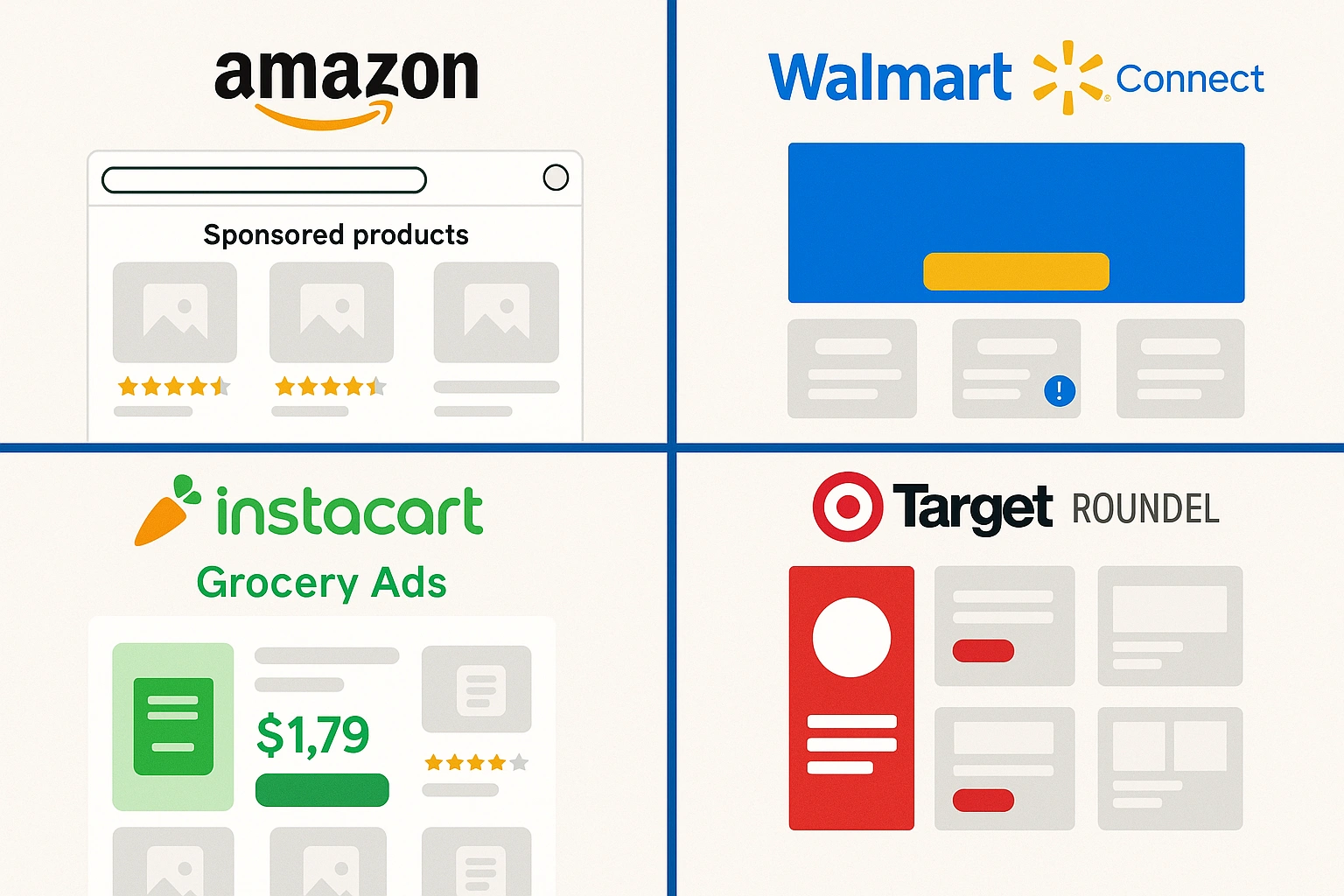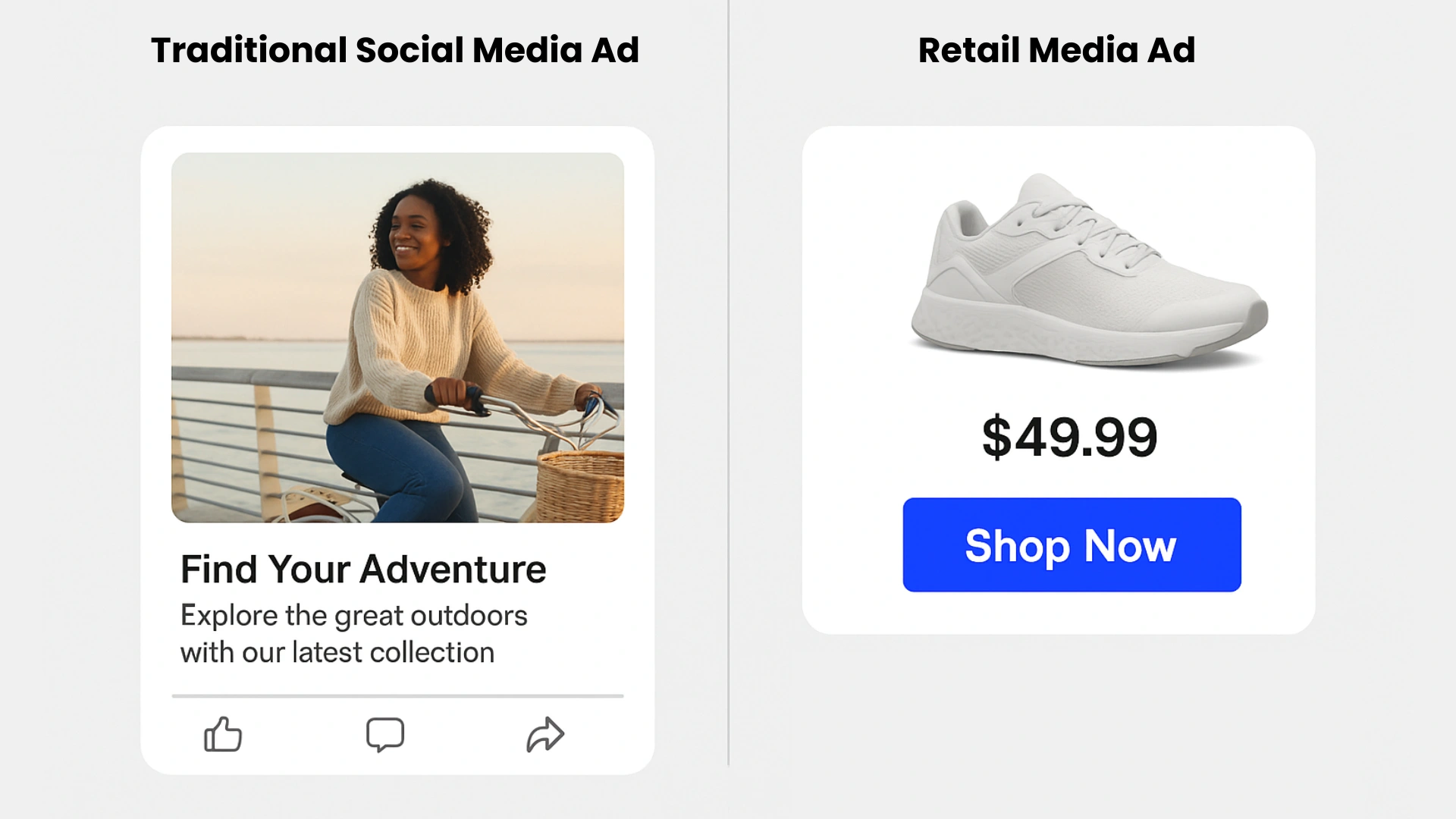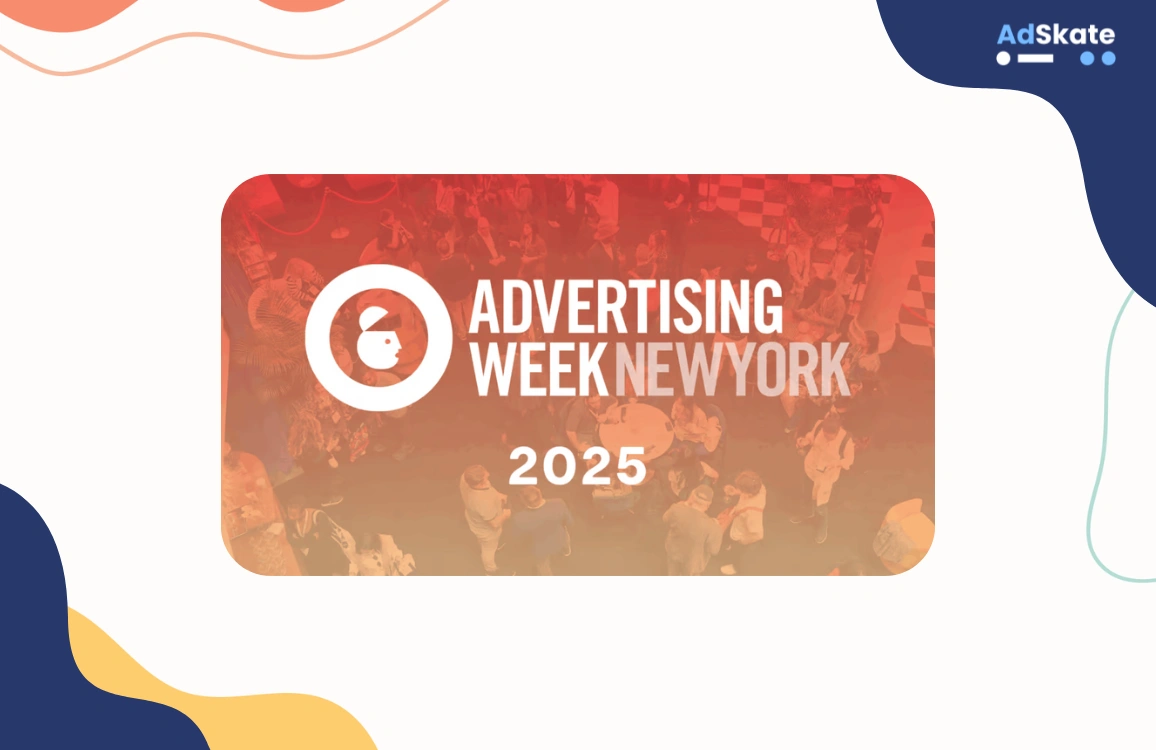What the Rise of Retail Media Means for Your Ad Creative
.webp)
Listen to the podcast version here:
Retail media used to be a niche. Now it’s one of the fastest-growing parts of digital advertising.
Brands are shifting more of their budgets into retail media networks (RMNs). These are ad platforms run by retailers like Amazon, Walmart, Instacart, and Target. They use their own shopper data to help brands show ads inside and outside their sites.
This shift affects more than media buying. It changes how creative teams need to think.
In retail media, your ad often appears right next to a product listing or search result. The shopper is already in buying mode. That means your creative has a much smaller window to make an impact.
It’s no longer enough to reuse the same ads across platforms. What works in a Meta campaign might not work in a crowded product carousel on a retail site.
This article looks at how retail media is changing the rules for ad creative. You’ll learn what makes these placements unique, where brands often miss the mark, and how to adjust your strategy to keep up.
Let’s start with the basics: what retail media actually is and why it matters.
What Are Retail Media Networks?
Retail media networks (RMNs) are advertising platforms run by retailers. They let brands show ads across the retailer’s digital properties, including websites, mobile apps, and email. Some also place ads off-site, using retailer data to target audiences on platforms like social media or connected TV.
These networks use first-party data, which comes from shoppers’ behavior on the retailer’s site. This data includes what people search for, what they add to cart, and what they buy. That makes RMNs valuable for advertisers who want to reach people close to the point of purchase.

Examples of major retail media networks include:
- Amazon Ads, which offers sponsored product placements, video ads, and display formats across its site and partner channels
- Walmart Connect, which places ads across Walmart.com, its app, and other digital touchpoints
- Instacart Ads, which lets food and beverage brands advertise across its grocery delivery platform
- Target Roundel, which uses Target’s in-store and online data to place personalized ads
These platforms are growing fast. Retail media spending worldwide is expected to reach over $165 billion by the end of 2025. That’s more than triple what brands spent in 2019 (EMarketer).
Retailers benefit because they open new revenue streams. Brands benefit because they can reach buyers at the moment they’re making decisions.
But this model also creates new demands on creative teams. Retail media ads appear in tight spaces, often right next to competing products. To succeed, your creative needs to be specific, clear, and built for the retail environment.
In the next section, we’ll look at what makes retail media creative different and why those differences matter.
Why Retail Media Changes the Rules for Ad Creative
Retail media placements aren’t like traditional digital ads. They show up in shopping environments where buyers are already comparing products, reading reviews, and deciding what to purchase. That changes how creative should work.
In these moments, context matters more than branding. A shopper doesn’t need a big brand story. They need a clear reason to click.
Retail media also gives you less space to say more. Ads often appear in carousels, sidebars, or product grids. Each ad sits next to other options. If your creative doesn’t stand out fast, it gets ignored.
And because these ads use first-party data from the retailer, not cookies or outside tracking, you can’t rely on past behavior to do the work. The creative has to connect in the moment.

Retail media creative needs to do three things well:
- Fit the shopping context
- Deliver value quickly
- Guide the shopper toward a clear next step
Many brands struggle because they repurpose social or brand ads that weren’t built for retail. These ads can look out of place, feel too vague, or miss the urgency that retail moments demand.
In the next section, we’ll break down the specific creative challenges that come with retail media and what to do about them.
Three Common Creative Challenges in Retail Media
Retail media gives you access to high-intent shoppers. But it also creates pressure. Your ads need to perform in tight, competitive spaces. Here are three challenges creative teams often face:
1. Matching Creative to the Shopping Funnel
Not all retail placements serve the same purpose. A homepage banner is different from a search result or a post-checkout ad. Each part of the funnel calls for a different message.
At the top, shoppers might be exploring. They need clear value or brand recognition. In the middle, they’re comparing. They want product details, reviews, or features. At the bottom, they’re ready to buy. Here, urgency and clarity matter most.
Using the same creative across all these placements leads to confusion or missed clicks.
2. Standing Out in a Crowded Layout
Retail sites are dense. A single page can show dozens of sponsored listings, product photos, and reviews. There’s not much room, and shoppers scroll fast.
Your creative needs to stand out without being loud. That often means:
- Clean design
- Strong contrast
- Clear messaging
- A single focal point
Subtle changes, like simplifying your text or removing clutter, can make a big difference in performance.
3. Driving Action Without Personal Data
Retail media works inside walled gardens. These platforms rely on their own data, not third-party tracking. That means you can’t count on retargeting to reinforce your message.
Your creative needs to do the heavy lifting. It has to make the offer clear, feel relevant to the moment, and guide the shopper toward action, all in one shot.
In the next section, we’ll look at how to adjust your creative process to meet these challenges head-on.
How to Optimize Ad Creative for Retail Media
Good retail media creative doesn’t try to do too much. It focuses on what the shopper needs at that exact moment. Here are five ways to improve your creative for retail placements:
1. Design for the Platform
Every retail media network has its own layout, image sizes, and ad formats. What works on Amazon might not work on Instacart or Walmart. Adjust your creative to match each platform’s structure.
Use simple visuals, bold product shots, and short headlines. Make sure your design looks clean and loads quickly.
2. Focus on What Matters to Shoppers
Shoppers care about price, delivery, reviews, and availability. If your product has a strong selling point, highlight it.
Instead of vague claims, show clear benefits:
- “$10 off today”
- “Free next-day delivery”
- “4.8 stars from 2,300 reviews”
This kind of detail helps shoppers compare and decide.
.webp)
3. Match Creative to Audience Context
Someone browsing a category page isn’t in the same mindset as someone on a product detail page. Adjust your creative to reflect what the shopper is likely thinking.
If they’re still exploring, lead with brand or product discovery. If they’re closer to purchase, reinforce confidence and make the next step easy.
4. Use Pre-Campaign Testing
Don’t guess what will work. Test it first.
Platforms like AdSkate can simulate how different audience groups will respond to your creative. You can identify which visuals, tones, and messages connect before you spend any media dollars.
This helps you reduce wasted impressions and avoid costly mismatches.
5. Build Variations Early
Instead of making one ad and repurposing it, build a few variations from the start. Tailor each to a different placement, audience, or stage in the funnel. This gives you more control and better results across the board.
In the next section, we’ll look at how AI helps speed up this process and makes your retail media creative smarter.
The Role of AI in Smarter Retail Media Creative
Retail media moves fast. Shoppers scroll, click, and buy in seconds. That pace leaves little room for trial and error. AI can help by making your creative process faster, sharper, and more informed.
Predict What Works Before You Launch
AI tools can evaluate your creative and predict how it will perform with different audiences. This helps you spot weak spots early, before you commit budget. You can test image choices, headlines, tone, and layout without running a live campaign.
This kind of pre-testing is especially useful for retail media, where space is tight and each impression counts.
Adjust Creative Automatically
If a version of your ad underperforms, AI can help you pinpoint why. It can flag issues like low contrast, unclear calls to action, or mismatched tone. It can also suggest specific improvements based on patterns from past campaigns.
Some tools can even generate new variations based on what’s working.
Scale for Multiple Placements
Retail media often requires many ad versions across platforms and placements. AI helps scale your creative without sacrificing quality. You can create tailored assets faster and stay consistent with your brand.
This means you spend less time tweaking designs and more time focusing on what actually drives performance.
In the final section, we’ll bring it all together and look at what these changes mean for your broader creative strategy.
Don’t Let Creative Be the Bottleneck
Retail media is no longer a side channel. It’s becoming a central part of many advertising strategies. But as media plans shift, creative needs to keep up.
Retail media placements are unique. They sit closer to the point of purchase. They use different data. They demand faster decisions. If your creative doesn’t reflect that, it won’t perform.
The good news is you don’t need to overhaul everything. Small changes, testing variations, tailoring to each platform, focusing on what shoppers care about, can lead to real results.
Creative should help, not hold you back. When you treat retail media as its own environment and build with purpose, you give your ads a better chance to succeed.
Take time to test. Watch what works. Use the tools available. And make sure your creative is built for the space it lives in.
Frequently Asked Questions
What is retail media advertising?
Retail media advertising is when brands place ads within a retailer’s digital space, such as their website, app, or email. These ads target shoppers based on what they search for, click on, or buy. Retailers like Amazon, Walmart, and Instacart offer these types of placements.
What is a retail media network?
A retail media network (RMN) is a platform that lets advertisers reach shoppers using data from a specific retailer. RMNs use first-party data to show ads on-site, off-site, or in-store. Examples include Amazon Ads, Walmart Connect, and Target Roundel.
How is retail media different from other types of digital advertising?
Retail media ads appear when people are already shopping. That means they often reach people closer to making a purchase. Unlike most display or social ads, retail media relies on first-party data from the retailer, not third-party cookies.
What makes a good retail media ad creative?
A good retail media ad is clear, simple, and built for the shopping environment. It highlights what matters most to the buyer, price, reviews, product features, or availability. It should also fit the size and format of the platform where it appears.
Can I reuse my social media ads for retail media?
You can, but you may not get the best results. Social ads often aim to tell a story or build awareness. Retail media ads need to deliver quick, product-focused messages. It’s better to adapt your creative to match the platform and the shopper’s intent.
How can I test my retail media creative before launch?
You can use AI-powered tools like AdSkate to test your creative before it goes live. These tools help predict how well your ad will perform with different shopper segments. Pre-testing helps you avoid wasted spend and improve your ad’s impact.
.webp)
.webp)
.webp)
.webp)

.webp)